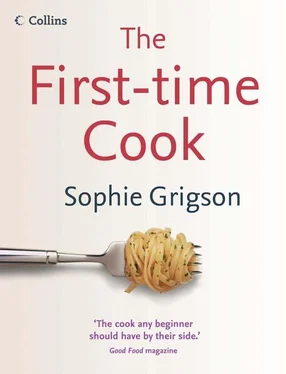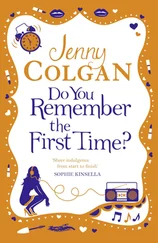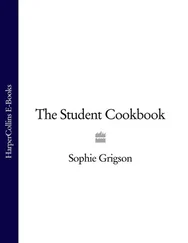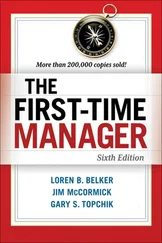Eggs are no longer just mere eggs. Oh no. Nowadays there is a bewildering series of choices to be made when buying eggs: four-grain, barn-fresh, perchery, free-range, organic, Colombian this, and something else that. In fact, buying eggs is not half as confusing as it may first seem when you are facing the high-stacked egg shelves. Ultimately there are really only three critical choices to make: size, the well-being of the laying birds, and freshness.
Eggs are sorted into size bands according to weight: extra large (more than 73g), large (63–73g), medium (53–63g) and small (less than 53g). All the eggs used in testing recipes for this book were large, so if you want to be sure of getting a good result with my recipes, these are the ones to go for. When you are using other cookbooks, particularly if you are baking cakes, it is worth checking the beginning of the book, where there should be a short section telling you what size eggs are to be used, as well as other useful basic cook’s information.
By the year 2012, the very worst space-depriving cages for egg-laying chickens will have been banned in the EU. About time too, for they are grim and deeply objectionable. Hard to believe that a nation of so-called ‘animal-lovers’ could have let them exist for so long. Meanwhile, unless you really don’t care one iota about animal welfare, pay the few extra pence to buy free-range eggs. The law guarantees that the chickens that lay these eggs at least have continuous daytime access to outdoor runs. In other words, they can peck around and stretch their wings, even if they don’t live in quite the idyllic circumstances one might imagine. Organic eggs are by definition free-range.
Crack open a perfectly fresh egg on to a saucer and the yolk stands proud above the white, which clings thickly around it. In an older egg the yolk is flatter and flabbier, while the white is more liquid and spreads in a dilute fashion around the saucer. Luckily you don’t have to crack open each egg to ascertain its age. Look on the box instead, where you will find a ‘best before date’. The eggs were laid 21 days, in other words three weeks, before this date.
For some cooking methods (poaching in particular) ultra-freshness is critical, whilst for others (e.g. boiling) a small scrap of maturity is a positive boon.
The doom-laden spirit of salmonella contamination still lingers on in many people’s minds. The truth is that these days the chances of developing salmonella poisoning from semi-cooked or raw eggs is verging on negligible. That time-honoured hazard of falling under a bus is far, far more likely to happen to you than a spot of salmonella sickness.
All eggs that are stamped with the ‘lion’ symbol (which represents the Lion Quality Mark) come from flocks of chickens that have been vaccinated against salmonella, and are regularly checked to make doubly sure they are clean. If you are buying wonderful extra-free-range eggs from a local farmer, then the likelihood is that his or her flock has also been vaccinated, but if in any doubt, just ask.
Salmonella bacteria are killed by high temperatures, so eggs that are hard-boiled or cooked thoroughly in, say, a cake batter cannot possibly cause any harm. Many of the most delicious ways of cooking eggs, however, demand that they are semi-cooked, with the yolk still runny and this is where, in the very, very unlikely event that they are infected, the problem lies. For most healthy people, the worst that could happen is a nasty bout of stomach upset and diarrhoea, but it is not worth risking even this extraordinarily unlikely event with anyone susceptible to illness. In other words, the elderly, invalids, pregnant women and very young children should all steer clear of semi-cooked or raw eggs. End of scare stories.
None. The colour of the eggshell is totally irrelevant and tells you nothing about the inside or the way it was produced. Even more surprisingly, the colour of the yolk isn’t much to go on, either. A deep, rich, almost orange hue might suggest a grain-rich diet for its mother hen, but it may just as well indicate the inclusion of dyestuffs in the feed. Appearances can be deceptive.
In an ideal world, you would keep your eggs in a cool larder, temperature around 15°C or less. Oh? You don’t have a cool larder where you live? How very awkward of you! You’ll just have to keep your eggs where most people store them: in the fridge. It’s the second best option and it’s done me fine for the past twenty something years, so I don’t think there’s any need for concern. Try to remember to get them out of the cold and into the warmth of the kitchen 15 minutes or so before cooking, particularly if you are boiling or poaching them – again, counsel of perfection, but easier to achieve than the cool larder.
Separating the yolk and white of an egg is essentially an easy process, but it may nonetheless take two or three attempts to get it right. So make sure that you have a couple of eggs in reserve, just in case. Fresher eggs (up to a week old) are easier to separate than older ones.
Before you start, gather together a large bowl to hold the whites (assuming you intend to whisk them after separating), and two smaller bowls. The first of the smaller bowls is for the yolks. The second is for the white of the egg that you are in the midst of separating, before you tip it into the larger bowl. Why do you need this extra bowl? Insurance. Just one small drop of fat in amongst the whites will be enough to prevent them whisking up properly. Yolks are very fatty. There is nothing more dismaying than successfully separating four eggs, and then breaking the yolk of the fifth so that it contaminates the whole lot. An infuriating waste of eggs and time. For the same reason, you should always make sure that both of the bowls for the whites are scrupulously clean before you begin, with no trace of grease.
1Hold the egg comfortably in your hand, pointed end towards your thumb, rounded end towards your little finger (or vice versa), fingers wrapped around.
2Tap the exposed side firmly against the edge of a bowl, cracking the shell. The skill here is to use enough force to crack the shell without actually smashing the whole egg. A bowl with a narrow edge is better than one with a thick rim.
3Turn the egg cracked side upwards and ease the tips of both thumbs into the crack, pulling the two halves of the shell apart, over the bowl, so that the yolk settles neatly into one side, while some of the white falls out of the other into the bowl.
4Gently tip the yolk from one half of the shell into the other, allowing the white to dribble out into the bowl. Two or three goes at this should be quite enough. Slide the yolk into a small bowl.
Whisked egg whites are used to lighten cakes, mousses, soufflé omelettes and other dishes. The whisking process traps small bubbles of air within the egg whites to make a foam. The more you whisk, the thicker and firmer the foam. For cooking you need to whisk egg whites either to soft peak or firm peak stage (see overleaf). But it is possible to go too far. Over-whisked eggs turn lumpy and it is impossible to incorporate them evenly into a batter. Nor will they give nearly so much lift.
When properly whisked whites are cooked, the air bubbles expand in the heat, lifting the mixture, at the same time as the egg white sets to hold the bubbles in place. Uncooked whisked egg whites are distinctly unstable, so must be used as soon as they have been whisked. If left standing around, they will collapse and liquefy and cannot be re-whisked successfully.
Читать дальше












